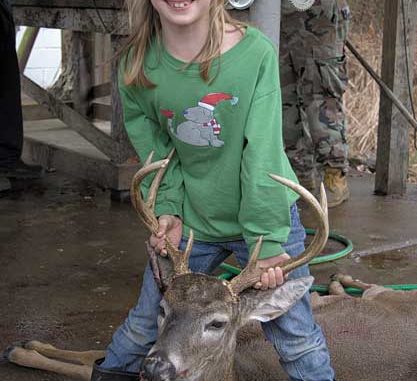
As the mercury plunges across the state, the peak of the rut is in full swing and does are feeding heavily on all concentrated food sources as they come into estrus.
Hopefully, the countless hours preparing food plots has paid off with lush greenery packed with nutrients. Any area concentrating does will prove to be hot spots for rutting bucks this month, giving hunters an opportunity to see the majority of the bucks utilizing their property.
Harvesting is a major component of quality deer management and is crucial during the heart of the deer season. Choosing when and when not to pull the trigger will prove to be vital for maintaining a high quality and balanced deer herd.
Quality deer management is made up of three basic components, superior genetics, adequate nutrition, and age. Harvesting strategy makes up 66 percent of the quality deer management plan, directly affecting the age structure and genetic pool.
Big trophy bucks fully mature at four to five years of age and should be the primary targets. At a minimum, 1½-and 2½-year old bucks with early developed desirable traits, such as 8- to 10-point racks and wide spreads should be protected. These young bucks should be left to inoculate does and to continue towards maturity. The 1½-year-old bucks may not show their potential in their first set of antlers and should be left to live another year.
Deer carrying superior genetics will pass on their characteristics at any age. In the same breath, deer expressing undesirable antler characteristics at any age, from 2½-year-old and older, should be immediately removed from the population to prevent genetic continuance. While buck harvests are crucial to any deer-management plan, consider harvesting two does for every buck taken to maintain a balanced deer herd.
It’s time to get in the woods and closely monitor food plots for buck activity. Enjoy the fruits of your labor and shoot a monster buck munching on your groceries.
Revive food plots with nitrogen
In November, temperatures continue to plummet on a more regular basis, and the acorns and other forage crops continue to dwindle. Food plots become less of a supplemental food source and more of a primary food source for deer, turkey, and other wildlife.
It is never too late to douse food plots with one last hopper full of nitrogen. Although air temperatures are fairly cool, ground temperatures are still relatively warm and can allow plants to uptake needed nitrogen for the winter. Most food-plot species tolerate and will respond positively to a minimal nitrogen supplement, but skip the clover and annual plots. These plants do not respond well to excess nitrogen.
Wildlife will directly benefit from the nitrogen boost with more hearty and nutritious forage. The food plots will continue to provide a rich food source for the winter.
Got a pond? Lime away!
A fish pond might not be the main priority this month, but it’s definitely a good time to start the liming process for new and existing ponds.
One might ask, “How do fish benefit from liming, anyway?”
The food chain within an aquatic environment begins with tiny microscopic plants that need an environment high in alkalinity. These microscopic plants are readily consumed by small fish and insects, creating the forage species for the targeted gamefish that all pond owners love to catch.
Alkaline levels are directly proportional to pond productivity. In other words, maintaining a high alkalinity level in a pond promotes fish production. Liming increases the alkalinity, raises the pH of the bottom sediments and reduces the acidity of the water. Liming instantly makes phosphorus available for microscopic plant growth, kick-starting the food chain. Liming also helps clear muddy water and removes organic stockpiles accumulated on the bottom. Lime should be evenly spread around the pond to obtain the best results.
Most fish ponds along the east coast naturally have low alkalinity and will almost always benefit from supplemental limestone deposits every few years. Total alkalinity should not fall below 20 ppm, and the pH should range from 6 to 9.
Limit gunning days on duck impoundments
The initial phase of the waterfowl season has come and gone, with a few teal and wood ducks contributing to the new 6-duck bag limit.
Duck hunters should be prepared for cooling temperatures and a flood of ducks migrating along the eastern flyway, making stops in the Carolinas and giving hunters a real chance to take a limit.
For starters, duck ponds should be filled completely for the short season this month and the regular season starting in December. It is time for hunters to convene and develop a plan before the heart of the season to allow for a prime opportunity for meeting the daily bag limit.
During their migration, a flock of ducks will come down and make its home in an area that meets all of their needs, including water, food, and cover. Obviously, all duck hunters want ducks to call their impoundments home, but too many times their visit is too short.
Ducks love shallow, flooded grain fields for building fat reserves during their migration, but they will quickly abandon an area after daily rapid gunfire. Over-shooting duck ponds will quickly reduce productivity and hunter success.
Impoundments should be hunted a maximum of two to three days per week and should be left alone, with little disturbance, on the off days.
If applicable, hunting should only be allowed during a portion of the day to allow birds to come in and feed. Continued disturbance will quickly reduce the productivity of the impoundments and force ducks to find other feeding grounds.
Generally, gun days will be more fruitful when more off days are set aside for ducks to become comfortable.

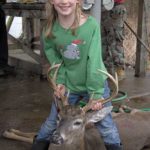
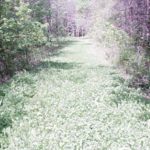
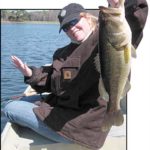
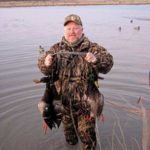



Be the first to comment